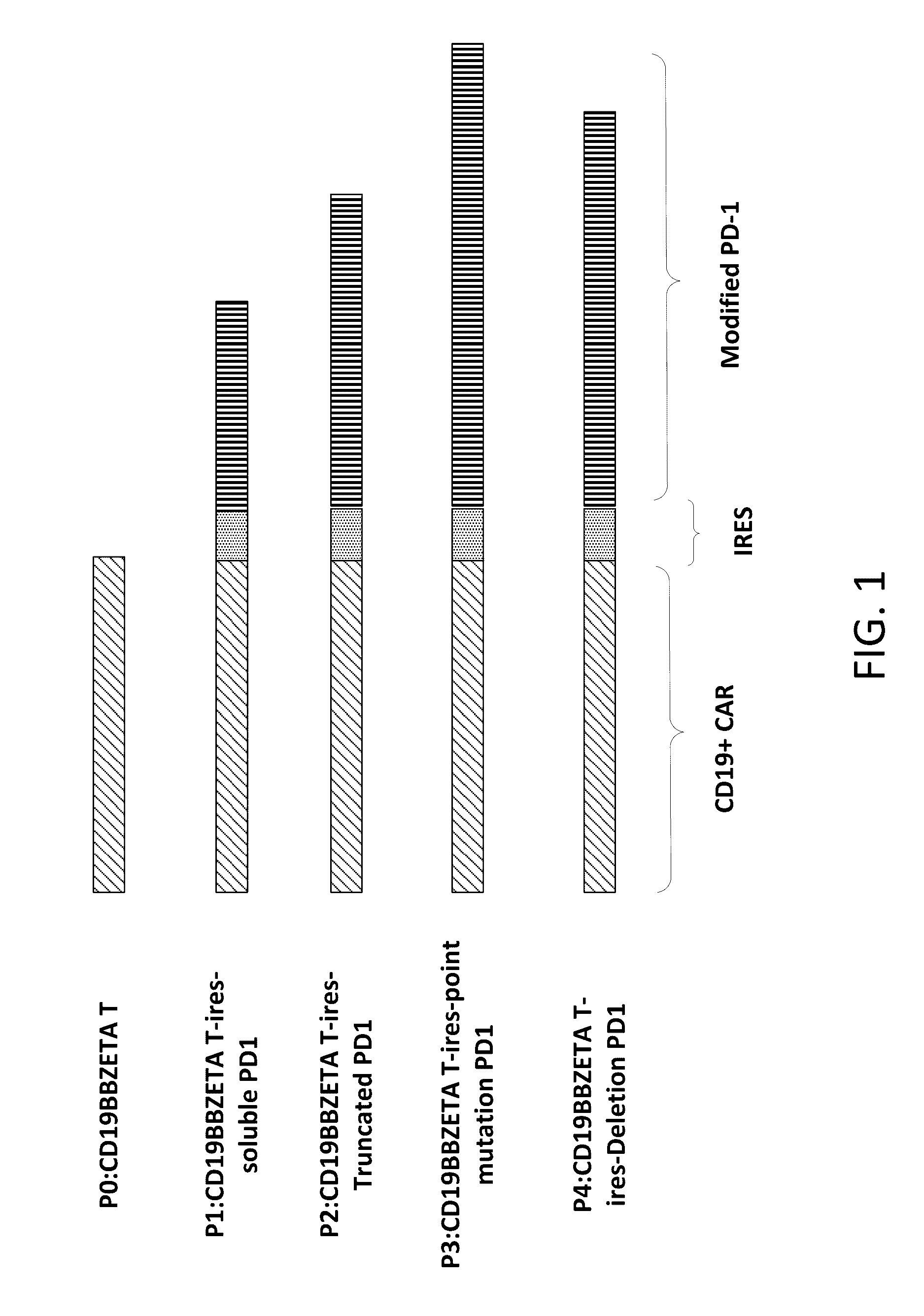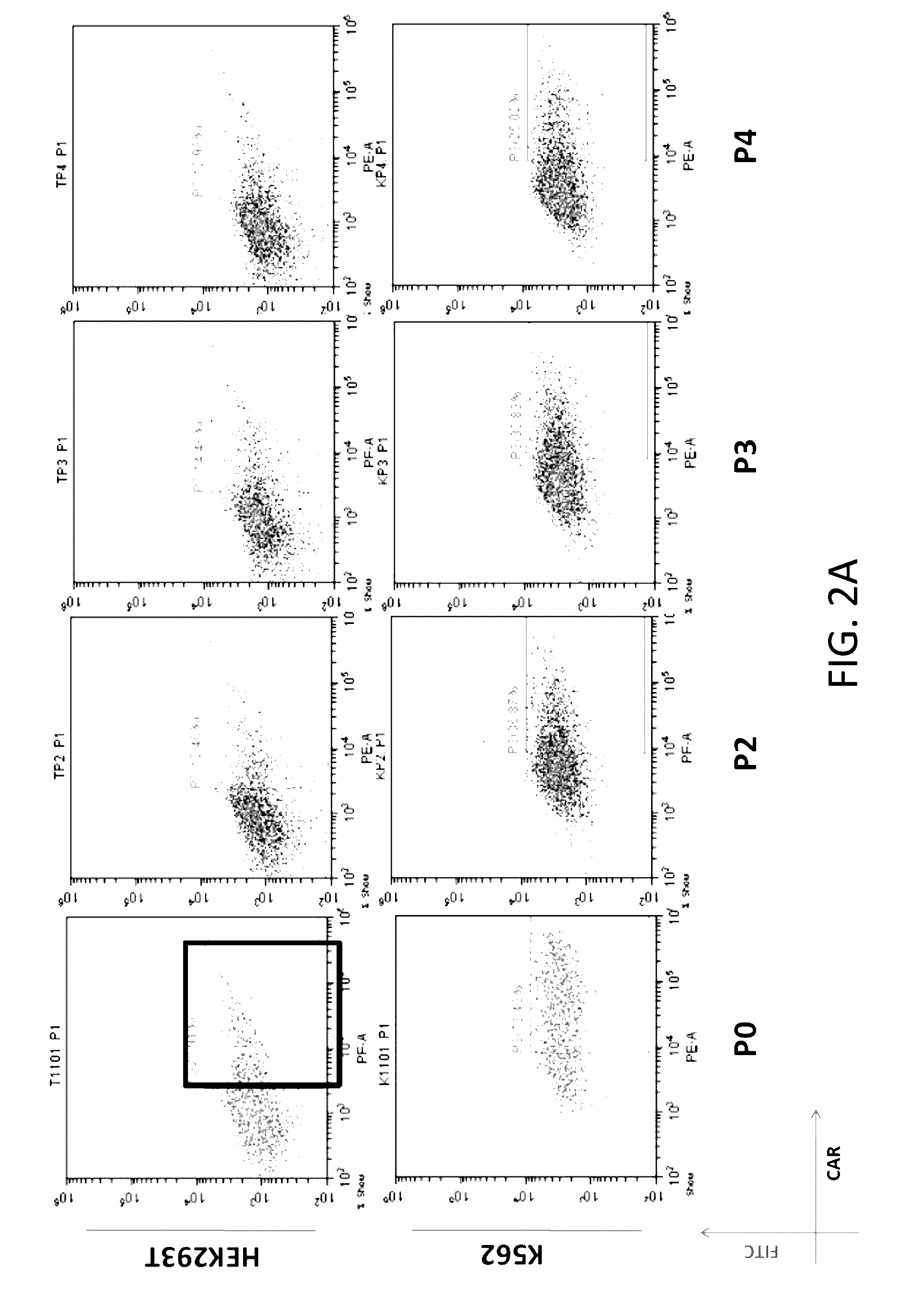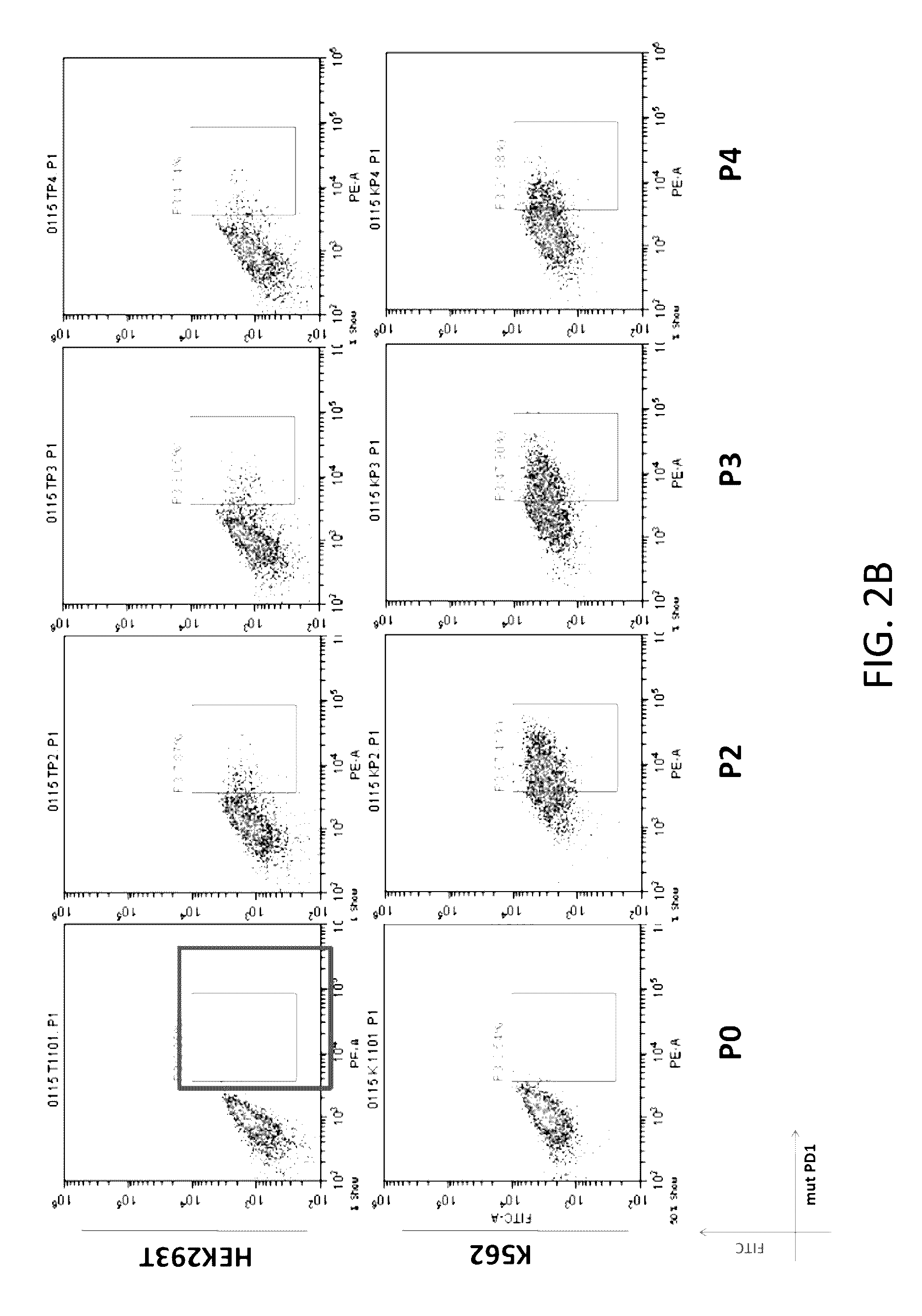Reducing immune tolerance induced by PD-L1
- Summary
- Abstract
- Description
- Claims
- Application Information
AI Technical Summary
Benefits of technology
Problems solved by technology
Method used
Image
Examples
example 1
Expression of CAR and PD-1 on HEK293T & K562 Cells
[0147]Lentiviral vectors that encodes a CD19 CAR and a modified PD-1 separated by the encephalomyocarditis virus internal ribosomal entry sequence were generated (see Chimeric Receptors Containing CD137 Signal Transduction Domains Mediate Enhanced Survival of T Cells and Increased Antileukemic Efficacy In Vivo Molecular Therapy vol. 17 no. 8, 1453-1464 August 2009 incorporated herein by reference). Information of DNA constructs encoding CAR and the modified PD-1 is provided in FIG. 1 and Table 1. A summary of these constructs and modules are listed in Tables 1-2.
[0148]
TABLE 1DNA constructs and encoding modulesPD-1PD-1Trans-PD-1PD-1Extra-mem-Intracellu-Signalcellularbranelar domainRefConstructs NamePeptidedomaindomainor residuesP0P0: CD19BBZETANoNoNoNoTP1P1: CD19BBZETAYesYesNONoT-ires-soluble PD1P2P2: CD19BBZETAYesYesYesResiduesT-ires-Truncated PD1P3P3: CD19BBZETAYesYesYesYes: aa223, YT-ires-point mutationY to A;PD1aa248,Y to AP4P4: C...
example 2
Expression of CAR and PD-1 on Primary T Cells
[0152]Primary T cells were obtained from patients. The obtained primary T cells were transduced with lentiviral vectors. Flow-cytometry were acquisition was performed and analyzed to determine expression of CAR and PD-1 in primary T cells. As shown in FIGS. 3A, 3B, and 3C, primary T cells expressed CARs (See Box in FIG. 3A) and PD-1s (See Box FIGS. 3B and 3C).
[0153]Techniques related to cell cultures, construction of lentiviral vectors, and flow-cytometry may be found in Control of large, established tumor xenografts with genetically retargeted human T cells containing CD28 and CD137 domains. 3360-3365 PNAS Mar. 3, 2009 vol. 106 no. 9, which is incorporated herein by reference.
example 3
Cytotoxic T-Lymphocyte Assay
[0154]In this assay, the cytotoxicity on target cells (i.e., K562-CD19) is measured by comparing survival of target cells culturing with effector cells (i.e., transduced T cells) relative to the survival of target cells culturing with negative control cells (i.e., non-transduced T cells). Target cells and effector cells or negative control cells were cultured for about 24 hours with a number ratio between the target cells and effector cells or negative control cells being about 10:1. Survival rates of target cells and IFN-gamma production of transduced T cells and non-transduced T cells were measured. As shown in FIGS. 4A and 4B, transduced T cells containing nucleic acid sequences encoding CAR and various PD-1s are capable of releasing IFN-gamma and killing CD19 cells. All error bars are representative of standard deviation.
[0155]Techniques related to cell cultures, construction of cytotoxic T-lymphocyte assay may be found in Control of large, establishe...
PUM
| Property | Measurement | Unit |
|---|---|---|
| Inhibition | aaaaa | aaaaa |
Abstract
Description
Claims
Application Information
 Login to View More
Login to View More - R&D
- Intellectual Property
- Life Sciences
- Materials
- Tech Scout
- Unparalleled Data Quality
- Higher Quality Content
- 60% Fewer Hallucinations
Browse by: Latest US Patents, China's latest patents, Technical Efficacy Thesaurus, Application Domain, Technology Topic, Popular Technical Reports.
© 2025 PatSnap. All rights reserved.Legal|Privacy policy|Modern Slavery Act Transparency Statement|Sitemap|About US| Contact US: help@patsnap.com



